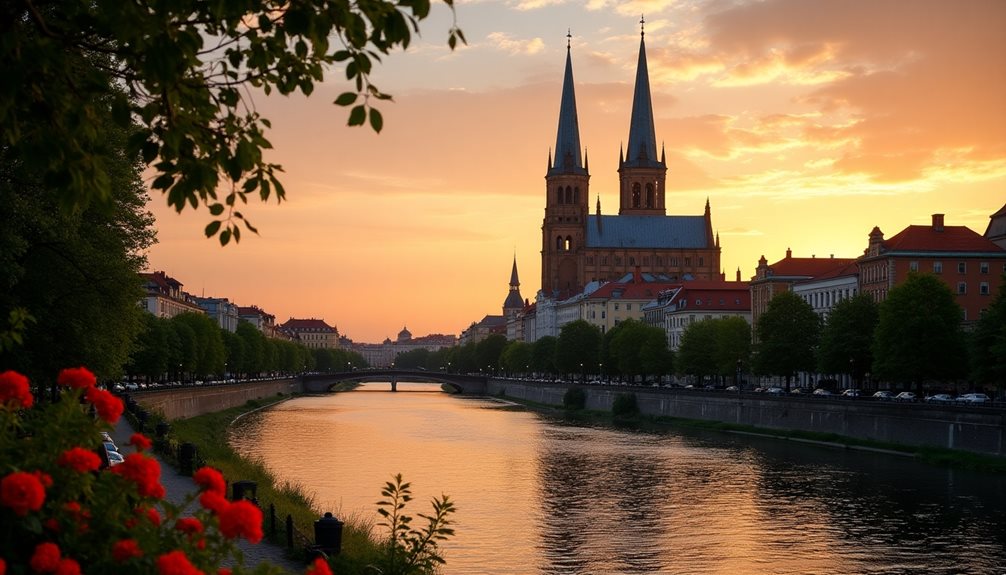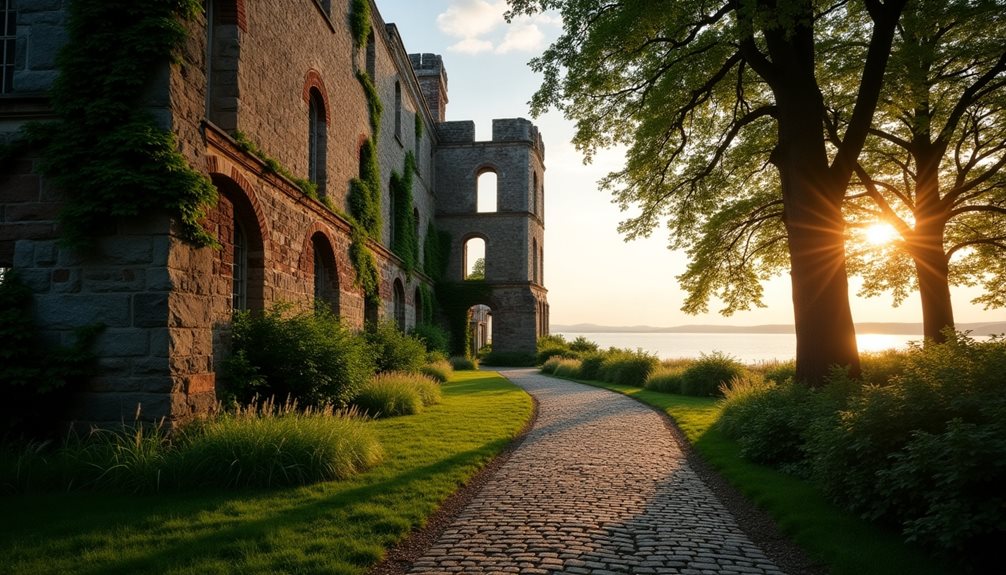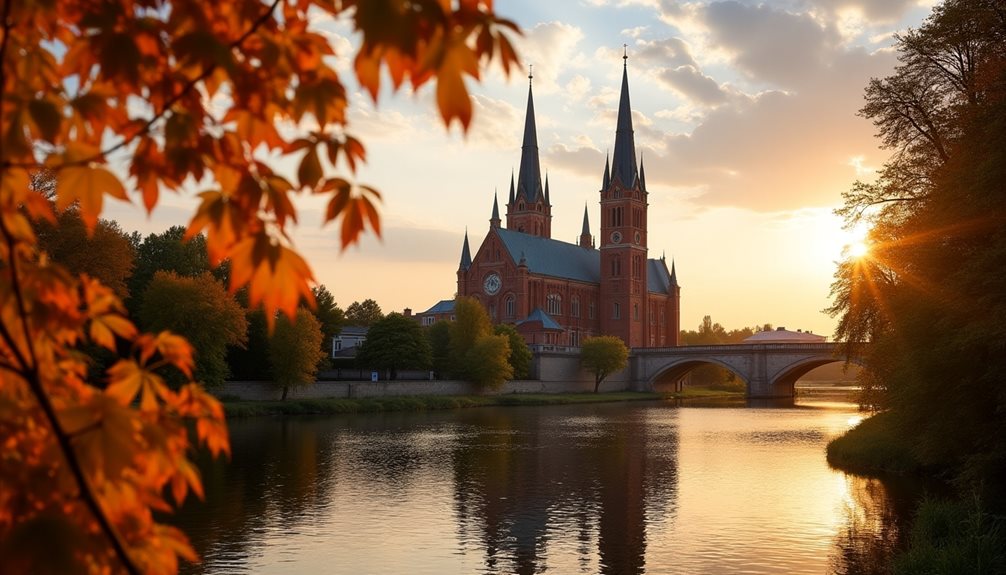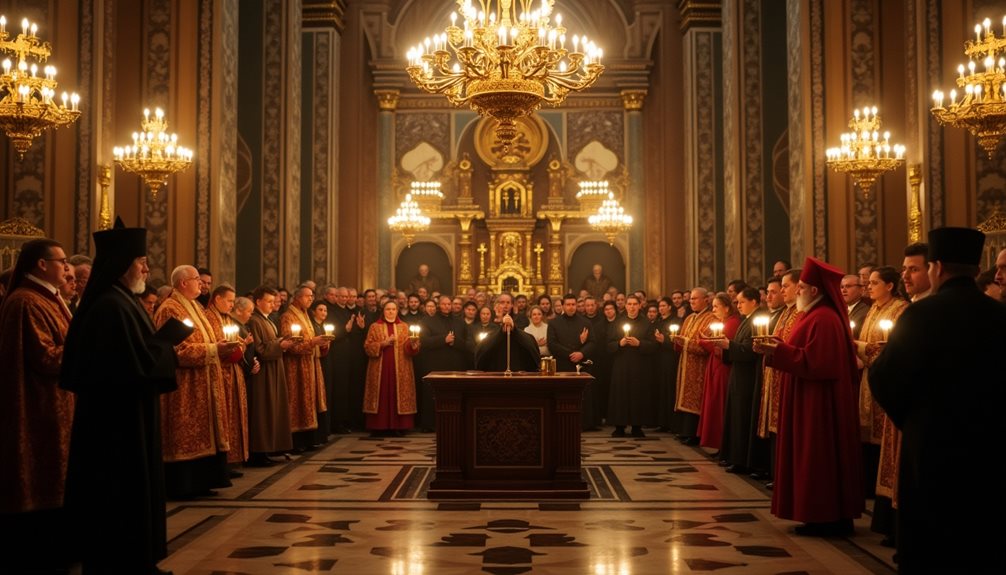Kaliningrad, Russia’s Baltic outpost, stands as a symbol of the region’s complex geopolitical history, located strategically between Poland and Lithuania. This exclave, once the Prussian city of Königsberg, carries the imprints of German, Polish, and Soviet influences. Its architectural mosaic includes Gothic remnants and Soviet-era structures, inviting curiosity about its multifaceted identity. As Kaliningrad’s contemporary role continues to evolve, the region’s rich history and cultural amalgamation offer intriguing insights into its past and future.
Introduction

Kaliningrad, a Russian exclave situated between Poland and Lithuania, occupies a distinctive position both historically and geopolitically. This strategically located territory on the Baltic Sea coast embodies a fascinating tapestry of cultural and historical influences, reflecting its complex past and present significance.
Originally established as the Prussian city of Königsberg, Kaliningrad boasts a rich mosaic of cultural landmarks that span centuries. The reconstructed Königsberg Cathedral, housing the tomb of philosopher Immanuel Kant, stands as a testament to the city’s enduring heritage. The region’s museums, including the unique Amber Museum, showcase its diverse history and natural resources.
Kaliningrad’s evolution from a former German territory to an integral part of Russian sovereignty underscores its intricate historical narrative. The city’s architectural landscape presents a striking juxtaposition of medieval fortresses, German Gothic structures, and Soviet-era buildings, illustrating the ongoing efforts to preserve and reconcile its multifaceted past.
The city’s maritime legacy is evident in its preserved waterfronts and nautical-themed attractions, highlighting its longstanding strategic importance. Cultural festivals celebrate Kaliningrad’s unique heritage, while the local cuisine offers an intriguing blend of Russian and European influences, further emphasizing its role as a cultural crossroads.
Kaliningrad’s transformation is particularly notable in its urban development. The Soviet period saw the construction of prefabricated housing blocks and iconic structures like the House of Soviets, dramatically altering the city’s appearance. In recent years, there have been concerted efforts to restore and reconstruct pre-war buildings, with new developments like the Fischerdorf quarter consciously emulating historical architectural styles.
As a focal point for understanding the interplay of cultural and geopolitical forces, Kaliningrad offers visitors a unique glimpse into a region shaped by varied rulers and ideologies. Its attractions provide insight into the complex dynamics of European history, making it an essential destination for those interested in the confluence of past and present, East and West.
Medieval Foundations

The medieval foundations of Kaliningrad trace back to the 13th century when the Teutonic Knights established Königsberg on the Prussian settlement of Tvanksta. This strategic conquest played an essential role in the Northern Crusades, as the Knights sought to expand Christian influence across the Baltic region.
Strategic and Commercial Significance
Königsberg’s integration into the Hanseatic League underscored its significance as a commercial hub, linking it to broader European trade networks. The region, now known as Kaliningrad, was greatly shaped by the arrival of the Teutonic Knights, whose presence left a profound legacy, most evident in the enduring architecture of Königsberg.
Influence of the Teutonic Knights
As Crusaders, the Knights greatly influenced Baltic history through their military campaigns and fortifications, marking a period where medieval warfare redefined territorial boundaries. Königsberg emerged as a strategic hub, blending the Knights’ martial prowess with cultural exchanges. This influence facilitated the integration of Western European elements into local traditions, shaping the unique historical mosaic of the area, which continues to echo in contemporary geopolitics.
Conquest and Urban Development
In the mid-13th century, the strategic ambitions of the Teutonic Order led to the conquest of the Prussian settlement known as Tvanksta, culminating in the establishment of Königsberg in 1255. This move exemplified the era’s medieval warfare tactics and marked a significant chapter in urban development. The construction of Königsberg transformed the landscape, embedding Teutonic influence within the region and facilitating cultural exchange between the Order and the native Prussians.
Military and Cultural Dynamics
Königsberg’s establishment not only served as a military bastion but also as a focal point for emerging political and cultural dynamics. Following its establishment, Königsberg became a pivotal player in the wider context of the Northern Crusades and the Hanseatic League. Strategically positioned, the city facilitated crusader expansion into pagan lands, wielding significant military influence. As religious conflicts unfolded, Königsberg also emerged as a key junction in burgeoning trade routes.
Role in Medieval Networks
Königsberg’s integration into the Hanseatic League fostered vibrant cultural exchanges, enhancing economic prosperity. Its role in these medieval networks underscored its dual identity as both a fortress of religious zeal and a hub of commerce, shaping the region’s geopolitical landscape.
German Heritage
Kaliningrad’s heritage is deeply intertwined with its past as part of East Prussia. German colonization left an indelible mark on the region, despite the waning presence of the indigenous Old Prussian population and the influences of neighboring Lithuanian and Polish cultures.
Architectural Echoes
Gothic cathedrals and fortifications stand as testaments to this era, though they bear the scars of post-WWII Soviet reconstruction. These structures offer a glimpse into the region’s complex historical narrative and its transformation into a Russian territory.
A Rich Cultural Legacy
Kaliningrad, once known as Königsberg, was a hub of cultural exchange. The influence of the Teutonic Knights is evident in the region’s architectural diversity, where medieval fortresses blend with Germanic styles. This fusion of Germanic, Lithuanian, and Polish influences shaped the region’s identity long before its modern strategic significance emerged.
The Decline of Old Prussia
As German colonization took hold, the distinct identity of the Old Prussians gradually faded. The interplay of cultures contributed to this shift, leaving a unique imprint on the region’s ethnic and cultural landscape.
Architectural Landscape
Kaliningrad’s architectural heritage is a testament to its complex history. Gothic cathedrals like the Königsberg Cathedral and medieval fortifications reflect the region’s strategic importance over centuries. Post-WWII reconstruction altered the urban landscape, but efforts to preserve the region’s cultural heritage persist.
Medieval Fortifications
The medieval fortifications of Kaliningrad are enduring symbols of the region’s strategic significance. Built by the Teutonic Knights, these structures served both military and administrative purposes. They offer insight into the geopolitical landscape of medieval Europe and the intricate balance of power.
Tourist Attractions
Kaliningrad offers a rich tapestry of cultural and historical experiences. Visitors can explore vibrant festivals, savor traditional cuisine, and discover hidden natural gems. Historical tours provide context, illuminating the region’s past as a strategic enclave and inviting visitors to explore its fascinating narrative.
Cultural and Historical Landmarks

Kaliningrad, once known as Königsberg, is home to historical landmarks that reflect its complex past and cultural heritage.
The Königsberg Cathedral, with its Gothic revival architecture, stands out as a significant site, housing the tomb of philosopher Immanuel Kant and renowned for its organ concerts.
The Brandenburg Gate, the last surviving gate from Königsberg’s medieval walls, symbolizes the city’s enduring legacy through centuries of geopolitical change.
Königsberg Cathedral
Nestled on the Kneiphof island in Kaliningrad, Königsberg Cathedral stands as a tribute to Gothic revival architecture and the rich historical fabric of the region.
This iconic structure is emblematic of Königsberg history, reflecting the city’s medieval past and architectural grandeur. Within its walls lies the resting place of Immanuel Kant, whose philosophical contributions continue to resonate globally.
The cathedral’s cultural significance is further heightened by its renowned organ concerts, which attract visitors enthusiastic to experience its acoustic splendor.
As a symbol of continuity and resilience, the cathedral remains a focal point of Kaliningrad’s cultural and historical landscape.
Brandenburg Gate
While Königsberg Cathedral stands as a symbol to the city’s architectural and cultural legacy, another significant historical landmark is the Brandenburg Gate, the last surviving gate from Königsberg’s medieval walls.
This structure exemplifies medieval architecture, offering a window into the past amidst Kaliningrad’s modern landscape. Its historical significance is profound, serving as a testament to the city’s resilience and transformation.
Urban preservation efforts have maintained its integrity, making it a focal point for cultural tourism. As a piece of living history, the Brandenburg Gate invites both locals and visitors to explore its storied past within the evolving geopolitical mosaic.
Fish Village
With a nod to the past and a keen eye on the future, Fish Village stands as a tribute to Kaliningrad’s ability to blend history with contemporary charm.
This reconstructed Gothic quarter, characterized by its distinctive architecture, offers visitors an immersive cultural experience. Riverside cafes provide scenic views, enhancing its appeal as a tourist attraction.
The area invites exploration through its quaint shops and vibrant atmosphere, reflecting Kaliningrad’s evolving identity.
Strategically positioned along the Pregolya River, Fish Village not only attracts tourists but also underscores the region’s geopolitical significance, bridging historical heritage with modern-day allure in Russia’s Baltic enclave.
Amber Museum
Housed in a 19th-century fortress tower, the Amber Museum in Kaliningrad offers a fascinating glimpse into the region’s rich cultural heritage and geological importance.
Showcasing amber craftsmanship, the museum highlights the historical significance of amber, often referred to as “Baltic gold.” With exhibits detailing its geological origins, the museum underscores amber’s cultural symbolism and economic importance throughout history.
As a prominent tourist attraction, it greatly impacts local tourism, drawing visitors to explore the intricate artistry and natural beauty of amber.
This cultural gem reflects Kaliningrad’s unique position as a guardian of a rare, prehistoric treasure.
Museum of the World Ocean
The Amber Museum’s celebration of Kaliningrad’s geological riches finds a counterpart in the Museum of the World Ocean, which highlights the region’s maritime legacy.
As Russia’s premier maritime museum, it emphasizes ocean conservation and marine biodiversity through innovative aquarium design. The museum offers insights into maritime education, featuring exhibits on underwater exploration and historic lighthouses that once guided seafarers through the Baltic Sea.
These displays reflect not only cultural enrichment but also serve as a reminder of Kaliningrad’s strategic geopolitical position. The museum’s mission extends beyond preservation, fostering a deeper understanding of global oceanic environments and their challenges.
Kaliningrad’s Cultural Mosaic
Kaliningrad, a Baltic exclave, presents a captivating blend of Soviet-era architecture and meticulously reconstructed German-style buildings, reflecting its intricate historical narrative. This unique juxtaposition defines the cityscape, where monolithic Soviet structures stand alongside heritage-preserving German buildings, each telling a story of the region’s past.
The city’s architectural diversity mirrors its geopolitical significance, serving as both a cultural melting pot and a strategic point in the Baltic region. The Soviet influence is evident in utilitarian designs, while reconstructed German-style buildings symbolize cultural integration and a commitment to preserving heritage.
Kaliningrad’s cultural identity is a rich tapestry woven from Russian, German, and Baltic influences. This blend is evident in its cuisine, festivals, and local customs. Culinary practices feature diverse flavors, showcasing the region’s rich history and access to Baltic Sea resources. Dishes like Königsberger Klopse and Baltic herring exemplify this fusion.
Artistic expressions thrive in various forms, from contemporary art galleries to traditional crafts. Festive celebrations highlight the region’s diverse heritage, commemorating both local and national history. These events provide visitors with an extensive view of Kaliningrad’s cultural landscape, reflecting its historical journey and geopolitical significance.
The ongoing efforts to blend these architectural styles and cultural influences highlight the challenges and opportunities in creating a cohesive urban identity amidst a diverse historical backdrop. Kaliningrad’s unique position as a bridge between eras and ideologies fosters a vibrant local identity, making it a fascinating destination for visitors.




